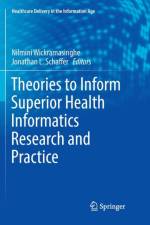av Nilmini Wickramasinghe
1 407 - 2 291
Digital disruption in healthcare is generating new technologies, applications, and large data sets, and these are all precipitating significant changes in healthcare processes. Emerging applications due to digital disruption and their impact on healthcare delivery and quality are becoming some of the key focus areas of research. However, to date, systematic, generalizable, full-scale evaluation of these new technologies/applications is lacking. Little is known about the net short- or long-term health and wellness impacts of digital technologies. Similarly, the care-delivery and management process changes caused by digital disruption are forcing healthcare organizations to react rather than plan for them in advance. Given these gaps, this book addresses the technology, applications, data, and process aspects of digital disruption in healthcare.This volume is a collection of key areas in health and wellness impacted by digital disruption. It highlights the benefits, barriers, facilitators, and transformative forces that are shaping healthcare digital disruption. Topics explored in the chapters include:Towards Network Medicine: Implementation of Panomics and Artificial Intelligence for Precision MedicineTelehealth Implementation: A Synopsis of Patients' Experience of Clinical OutcomesRealising the Healthcare Value Proposition of Better Access, Quality and Value of Care by Incorporating the Social Determinants of Health with Digital HealthThe Internet Hospital in the Time of COVID-19: An Example from China Given the diverse interest in healthcare delivery solutions today, the need is broad across academia and the healthcare industry for a comprehensive resource for teaching, practice, and research. Digital Disruption in Healthcare is a point-of-entry resource for transferring theory into practice for heads of IT departments in hospitals, consultants, and academia, as well as scholars and researchers. Both graduate and undergraduate students as well as certificate-seeking health informatics and public health students would benefit from this book. Furthermore, it is useful for healthcare stakeholders including healthcare professionals, clinicians, medical administrators, managers, consultants, policy-makers, and IT practitioners within the healthcare space.




